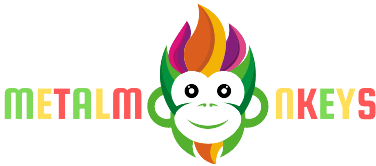The digital age has brought about a significant transformation in the realm of education, calling for innovative teaching methods that align with the needs of today’s learners. This blog delves into various contemporary teaching strategies that have emerged in response to the digital revolution, aiming to enhance both learning experiences and outcomes.
Embracing Technology in the Classroom
The integration of technology in education has opened up new avenues for teaching and learning. Digital tools and resources, such as interactive whiteboards, educational apps, and online resources, have become indispensable in modern classrooms. These technologies not only make learning more engaging but also cater to different learning styles, making education more inclusive and effective.
Flipped Classroom: A New Approach to Learning
The flipped classroom model represents a significant shift in traditional teaching methods. In this approach, students are introduced to learning material before class, often through digital mediums, and classroom time is used to deepen understanding through discussions and practical applications. This method encourages active learning and allows teachers to provide more personalized attention.
Project-Based Learning for Real-World Skills
Project-based learning (PBL) is a dynamic classroom approach in which students actively explore real-world problems and challenges. By engaging in projects that require critical thinking, collaboration, and creativity, students develop practical skills that are essential in the digital age. PBL not only enhances subject knowledge but also fosters life skills such as problem-solving and teamwork.
Gamification: Making Learning Fun and Engaging
Gamification involves applying game-design elements in educational contexts to make learning more engaging and motivating. Elements like points, badges, and leaderboards can transform mundane tasks into exciting challenges, thereby increasing student engagement and participation. Gamification has been shown to enhance motivation and learning outcomes, making it a powerful tool in modern education.
Personalized Learning: Catering to Individual Needs
In the digital age, personalized learning has gained prominence, allowing educators to tailor the learning experience to each student’s strengths, needs, and interests. With the help of adaptive learning technologies, teachers can create individualized learning paths, ensuring that each student can learn at their own pace and style.
Collaborative Learning in the Digital World
Collaborative learning, facilitated by digital platforms, encourages students to work together, share ideas, and solve problems collectively. Tools like online discussion forums, group projects, and collaborative documents enable students to engage with their peers beyond the physical classroom, fostering a sense of community and teamwork.
Blended Learning: Combining Traditional and Digital Methods
Blended learning is an approach that combines traditional classroom methods with online learning. This model offers a balanced mix of face-to-face interaction and digital content, allowing for a more flexible and varied learning experience. Blended learning caters to different learning preferences and provides opportunities for both independent and collaborative learning.
Data-Driven Instruction for Improved Outcomes
In the era of big data, data-driven instruction has become a key component of innovative teaching. By analyzing data on student performance and engagement, teachers can gain insights into learning patterns and challenges. This information can be used to adjust teaching strategies, personalize learning experiences, and improve educational outcomes.
The Role of Social Media in Education
Social media platforms have emerged as valuable tools for education in the digital age. They offer unique opportunities for engagement, collaboration, and information sharing. Teachers can use social media to extend classroom discussions, share resources, and connect with students in a familiar digital environment.
Preparing Students for a Digital Future
As we embrace these innovative teaching methods, QATopics emphasizes the importance of preparing students for the digital future. By incorporating skills such as digital literacy, online communication, and information management into the curriculum, educators can ensure that students are equipped to thrive in an increasingly digital world.
The digital age demands a rethinking of traditional teaching methods. By adopting innovative approaches like the flipped classroom, project-based learning, and blended learning, educators can create more dynamic, engaging, and effective learning environments. As we continue to explore the possibilities of digital education, QATopics remains committed to providing insights and resources for educators striving to make a difference in their students’ lives.
In summary, the transformation of education in the digital age is an ongoing journey, one that requires continual adaptation and innovation. The teaching methods discussed in this blog, from gamification to data-driven instruction, represent just the tip of the iceberg. As we move forward, QATopics will continue to explore and share the latest trends and strategies in digital education, empowering educators to shape the future of learning in this exciting and ever-evolving landscape.
